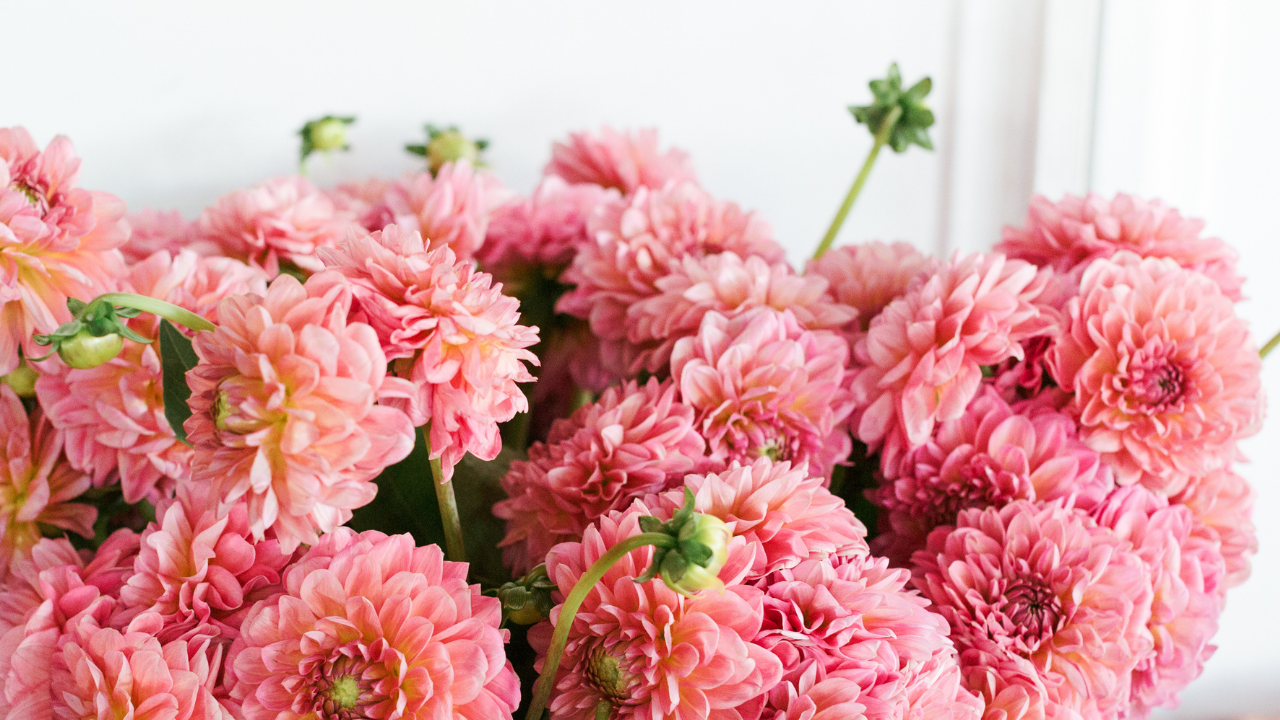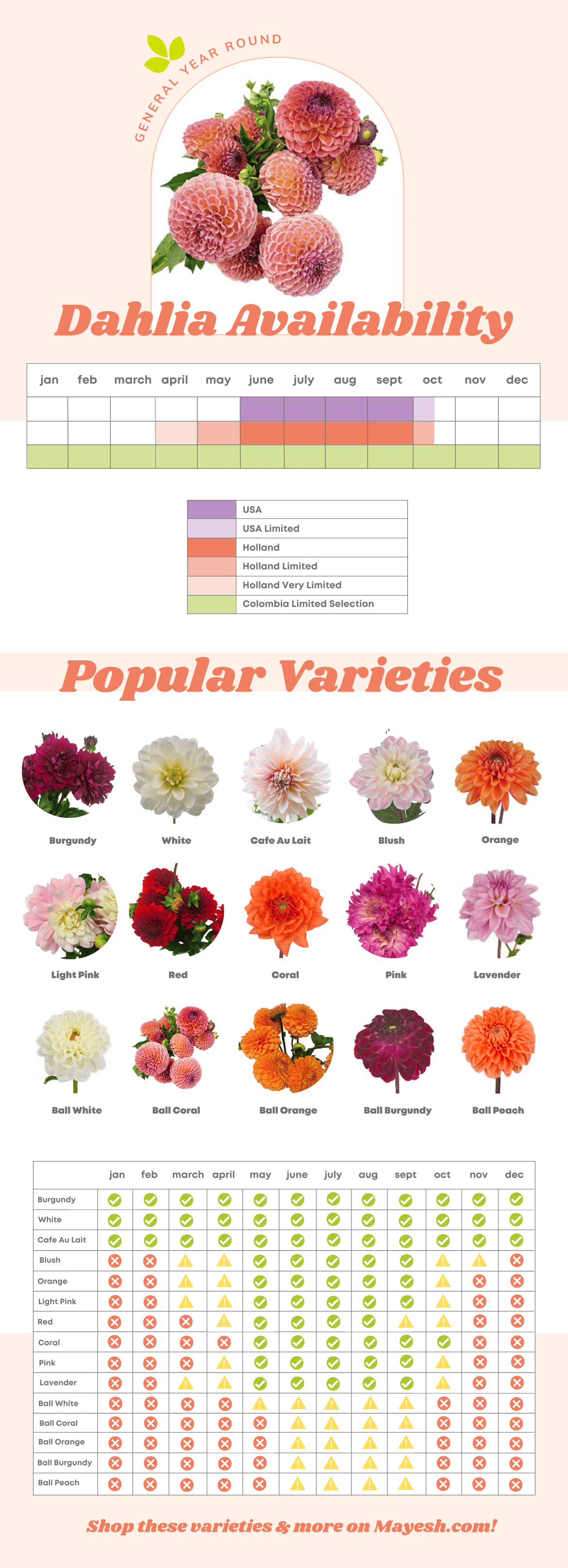Annual Dahlia Availability
After we put out our Annual Peony Availability infographic last month, dahlias were highly requested to be next! They're such a beautiful, vibrant flower that everyone knows and loves, but boy can they be tricky!
Read below for resident flower expert David Dahlson's summary of dahlia seasonality and tips for making them last, and scroll a bit further for a helpful infographic that you are more than welcome to save to your desktop for future reference!
Dahlias are fabulous ornamental flowers that originally came from Mexico. The tubers were discovered by the Spanish in the 17th Century and investigated as a possible food source, and then subsequently abandoned. Flower enthusiasts in France and England were attracted to their ornamental possibilities and did much hybridizing in the 19th century, laying the foundation for the spectacular array of colors and shapes available today.
Dahlias are a summer flower and are traditionally in production from June until the first frost in late September, or early October. They cannot tolerate any freezing temperatures at all but do thrive with warm days and cool nights. Their vascular system is incredibly fragile, so cut flowers frequently do not draw water efficiently, leading to rapid senescence. Dahlias are the one product that Mayesh does not warranty as the flaws are genetic and endemic to the product. That said, Dahlias have such a dazzling allure that many floral professionals are willing to take the risks involved with working with these sparkling flowers.
As a rule, the closer one is to the source of the Dahlias, the better the chances of success are. Recent improvements in growing techniques and post-harvest treatments have substantially improved longevity, so we can receive flowers from Holland with reasonably decent outcomes. We do not receive from the southern hemisphere as the logistics chain is too long.
Colombia is an ideal location to grow Dahlias, but the red tape involved with importing suitable varieties for production means that currently there are only a few varieties available, and no white. We expect this will change, and combined with improved harvest and post-harvest techniques, within a few years, Mayesh expects to see year-round availability of Dahlias from Colombia in the marketplace.
At Mayesh locations where we have a local supply of Dahlias, we offer a wide variety of colors, shapes, and sizes. For shipping purposes, we generally restrict options to the “Ball-type” Dahlias as they provide relatively superior performance and do better in transit.
Regardless of where the Dahlias come from, they remain a delicate and inconsistent floral product, even when cut from one’s own backyard. Therefore, they are only recommended for weddings and events.
Tips to improve performance:
- Remove anything from the stem that you do not need for aesthetic purposes, especially lateral buds. If you are inclined to use the buds in your designs, it is suggested that you remove them from the main stem and place them in the arrangements separately. These draw an enormous amount of energy from the principal flower, which needs all the help it can get.
- Cut each stem with a scalpel, one at a time, at a 45° angle. If not a scalpel, then a really sharp, clean knife. Using florist clippers, pruners or bypass secateurs can crush the stems, which may inhibit the uptake of water in the delicate vascular system.
- Make sure there are no leaves or other detritus in the container that could block the stems' access to water.
- Reserve in a cool place, around 55 degrees F, away from any AC fans, draughts, or breezes, until needed.
Note: Get care and processing tips for more flowers here.

